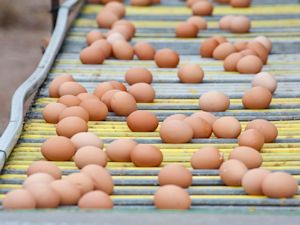Blue-capped Cordon Bleu Waxbill
Blue capped | Blue headed | Cordon Bleu Waxbill
Feeding and Conditioning
Add pollen to the rearing mix described on the previous page ( feeding) to bring cocks into condition
Do NOT use mix with pollen once laying has commenced
Pollen in powdered form can be bought from health food shops or Amazon Amazon UK
Add one tablespoon of pollen powder for every 2Kg of dry seed initially added when making your rearing food mix
I now make eggfood with probiotic added to keep the gut in good condition. I use BioPlus™
Add at a rate of 1.5 teaspoons per 500gm (weight of the initial dry seed)
Initially use rearing food with pollen included once a week. Then use twice a week to bring birds into condition (perhaps for about 6 weeks)
STOP using pollen for a pair as soon as eggs appear. For these birds use Change to rearing food without the pollen. Then, give daily to youngsters until they moult
Paul de Nil recommends administering the rearing food once a day at 5pm
Why 5pm?
Weaker/ smaller chicks tend to die during the night, due to insufficient food gained versus their stronger or older sibblings
5pm feed means the chicks get the best food from the fresh, full dish in the evening. This helps get weaker chicks through the 'critical' night

Bengalese tend to settle in their boxes to roost quite early.
This means a long night for chicks
When Bengalese are used to an evening feed they come out to eat. So, the chicks get a later and extra feed than they would have otherwise
Overfeeding the mix can lead to 'battery-hen' syndrome. Eggs are laid every two or three days. Fertility is poor and sitting is irregular
Stopping such a hen isn't easy. Most would separate the pair with a wire divider (not easy in my setup). Separating the birds out of sight of each other stresses them badly. Moving the pair to a small cage seems less stressful
One hen laid 34 eggs in 99 days. Only 9 were successfully foster-reared (24%). Others were infertile or addled
That this hen remained alive and well would suggest the eggfood mix delivers enough calcium, but, please try not to overdo the mix
Note that too much livefood to pairs without chicks can also induce 'battery-hen syndrome'
Add pollen to the rearing mix described on the previous page ( feeding) to bring cocks into condition
Do NOT use mix with pollen once laying has commenced
Pollen in powdered form can be bought from health food shops or Amazon Amazon UK
Add one tablespoon of pollen powder for every 2Kg of dry seed initially added when making your rearing food mix
I now make eggfood with probiotic added to keep the gut in good condition. I use BioPlus™
Add at a rate of 1.5 teaspoons per 500gm (weight of the initial dry seed)
www.lavender-waxbill.com
www.parrot-finches.com
www.waxbillfinchsociety.org.uk/
www.welcomewildlife.co.uk
www.snorkellingphotography.com




